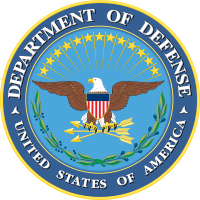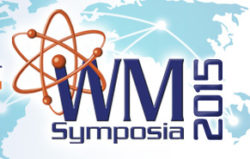May 21, 2015
 Following the recent merger of Brooks Rand Labs and Applied Speciation, an article was published in the 2015 Environmental Industry Outlook 2015 edition of the Environmental Business Journal. This article neatly sums up the many benefits that this merger brings to the new company, which will be known as Brooks Applied Labs, as well as to our current and future clients. With the combined resources of both companies, the merged company offers additional capacity for fast turnaround projects, a far greater breadth of specialty analytical services, and the same outstanding data quality and customer service that our customers have come to expect from us.
Following the recent merger of Brooks Rand Labs and Applied Speciation, an article was published in the 2015 Environmental Industry Outlook 2015 edition of the Environmental Business Journal. This article neatly sums up the many benefits that this merger brings to the new company, which will be known as Brooks Applied Labs, as well as to our current and future clients. With the combined resources of both companies, the merged company offers additional capacity for fast turnaround projects, a far greater breadth of specialty analytical services, and the same outstanding data quality and customer service that our customers have come to expect from us.
Click here for a reprint of the article.
Apr 7, 2015
 In case you missed it, Brooks Rand Labs (BRL) and Applied Speciation and Consulting (ASC) officially merged on April 1, 2015.
In case you missed it, Brooks Rand Labs (BRL) and Applied Speciation and Consulting (ASC) officially merged on April 1, 2015.
As Brooks Applied Labs, we will not only continue to provide you with the best customer service and most cutting-edge trace metals and metal(loid) speciation analytical services available in the industry, but our combined resources will enable us to increase our capacity and offer an even more comprehensive selection of specialty metals analyses and consulting services.
BRL’s strength in ultra-low-level mercury, methylmercury, and other mercury speciation analyses using cold vapor atomic fluorescence spectroscopy (CVAFS) combined with ASC’s broad range of high-level metals speciation services mean that our clients can more easily get exactly what they need for their projects and applications that require the support of specialty metals analyses. With this merger, cutting-edge method development, superior data quality, outstanding customer service, fast turnaround times, and a wide-range of available deliverable formats are all available from one laboratory!
All staff from BRL and ASC are staying on in the new company, so please feel free to call or email your existing point of contact directly with questions or find out more by reading our merger letter. We will be operating as BRL as we transition and consolidate into Brooks Applied Labs later this year. We are all thrilled about this merger and will be in touch to share important updates with you in the coming months!
Apr 7, 2015
Our Client Services Manager, Tiffany Stilwater, will be attending the Reclaiming the Sierra Conference from April 20 – 21 in Sacramento, CA. Attendees, across all industries, come together to not only to visit the former Gold Rush sites, but to coordinate the needs of mercury impairment projects.
ACIL Policies and Practices Conference
 President/CEO Michelle Briscoe will be meeting with other industry leaders at the American Council of Independent Laboratories’ Policies and Practices Conference. The conference will be hosted in historic Arlington, Virginia April 20 – 22nd. This is an excellent opportunity to discuss best business practices, successes, and struggles, and to network with laboratories from all over the U.S.
President/CEO Michelle Briscoe will be meeting with other industry leaders at the American Council of Independent Laboratories’ Policies and Practices Conference. The conference will be hosted in historic Arlington, Virginia April 20 – 22nd. This is an excellent opportunity to discuss best business practices, successes, and struggles, and to network with laboratories from all over the U.S.
Environmental Monitoring & Data Quality Workshop/strong>
 Michelle Briscoe and Technical Director Hakan Gürleyük on “Case Studies on Arsenic and Hexavalent Chromium: How to avoid false positives and increase data quality“. We would enjoy connecting with you at this local workshop, let us know if you will be attending!
Michelle Briscoe and Technical Director Hakan Gürleyük on “Case Studies on Arsenic and Hexavalent Chromium: How to avoid false positives and increase data quality“. We would enjoy connecting with you at this local workshop, let us know if you will be attending!
Mar 16, 2015
 At the beginning of each year, the U.S. EPA notifies NPDES permit holders of their requirement to participate in the annual Discharge Monitoring Report – Quality Assurance (DMR-QA) study under Clean Water Act (CWA) Section 308. If you received a notification letter and have contracted Brooks Rand Labs to perform analyses in support of your permit, please contact us with your verification form information. The deadline to register for the DMR-QA 35 study is March 20, 2015. The study ends July 10, 2015, and results will be available no sooner than August 28, 2015.
At the beginning of each year, the U.S. EPA notifies NPDES permit holders of their requirement to participate in the annual Discharge Monitoring Report – Quality Assurance (DMR-QA) study under Clean Water Act (CWA) Section 308. If you received a notification letter and have contracted Brooks Rand Labs to perform analyses in support of your permit, please contact us with your verification form information. The deadline to register for the DMR-QA 35 study is March 20, 2015. The study ends July 10, 2015, and results will be available no sooner than August 28, 2015.
A big THANK YOU to all of our clients who have already registered! From your BRL Project Managers: Amanda, Lydia, and Tiffany.
Mar 16, 2015
AEHS Annual International Conference on Soil, Water, Energy, and Air

Join us at the AEHS Foundation’s 25th Annual International Conference on Soil, Water, Energy, and Air in sunny San Diego, CA from March 23-26. This popular conference brings together environmental professionals from across a variety of industries to discuss issues related to soil, water, and air contamination. Brooks Rand Labs representative and Technical Sales Specialist, Elizabeth Madonick will be attending the conference to explore some of the most recent information about these important environmental topics.
Annual Waste Management Conference
 Brooks Rand Labs will also be exhibiting from March 15 through March 18 in Phoenix, AZ at the annual Waste Management Conference, which is considered the most prestigious international conference for the management of radioactive waste. If your upcoming environmental projects require trace metals or speciation analysis, please come by booth #1028 to say hello to our President, Michelle Briscoe, and Amanda Royal, Project Manager and resident sampling expert.
Brooks Rand Labs will also be exhibiting from March 15 through March 18 in Phoenix, AZ at the annual Waste Management Conference, which is considered the most prestigious international conference for the management of radioactive waste. If your upcoming environmental projects require trace metals or speciation analysis, please come by booth #1028 to say hello to our President, Michelle Briscoe, and Amanda Royal, Project Manager and resident sampling expert.
Feb 10, 2015
The Mercury Group at BRL has developed a method modification to EPA Method 1630 that significantly lowers the methylmercury (MeHg) method detection limit (MDL). At 0.005 ng/L, or parts-per-trillion (ppt), this new low-level MDL is 4 times lower than the standard MDL of 0.02 ng/L. This new low-level MeHg method will be quite useful for applications such as environmental modeling and Total Maximum Daily Load (TMDL) studies where having a true, measurable result, rather than a ‘non-detect’ value, is essential.
An ultra-low MDL can be especially valuable to areas like the San Francisco Bay and Estuary, as well as surrounding tributaries, where MeHg concentrations can often be very low, but it can be critically important to have quantifiable MeHg values for environmental assessments. According to Don Yee of the San Francisco Estuary Institute, the ability to detect low concentrations and small differences is important because bioconcentration from water to tissues begins with uptake by small organisms like phytoplankton and the MeHg can be concentrated by a factor of 100,000 or greater.
To achieve this MDL, rigorous equipment preparation measures are taken prior to distillation followed by ethylation, trap pre-concentration, gas chromatography separation, pyrolytic combustion, and atomic fluorescence spectroscopy (CV-GC-AFS) using a Brooks Rand Instruments MERX-M analyzer. The ultra-sensitive MERX-M can quantify methylmercury at levels less than a tenth of a picogram.
Contact us for more information regarding our Low-Level MeHg Method or to request a quote.
Feb 10, 2015
Our very own Metals Chemist, Abby Rudd, co-authored an article recently-published in the journal Science of the Total Environment entitled Total- and Methyl-mercury Concentrations and Methylation Rates across the Freshwater to Hypersaline Continuum of the Great Salt Lake, Utah, USA (read abstract online). The article’s lead author, William P. Johnson, is a professor in the Department of Geology and Geophysics at the University of Utah in Salt Lake City. The study focuses on the methylation rate of mercury (Hg) in non-saline water, hypersaline water, and sediments from the Great Salt Lake and surrounding wetlands. The objective of the study was to correlate the methylation potential within specific environmental conditions (i.e., oxic, anoxic) to the Hg burden of the locale aquatic and terrestrial wildlife over time. This is a fascinating study that is a good read for any Hg or Great Salt Lake enthusiasts! Enjoy and thank you Abby!
Jan 19, 2015

Consumer Reports recently published an article regarding the risks associated with the levels of arsenic in rice and rice products. Since there is not yet an FDA-mandated limit on the amount of inorganic arsenic (the more toxic form of arsenic) that is present in our food, the guidelines published by Consumer Reports provide some of the only recommendations available to the public on what foods are higher and lower in inorganic arsenic, and how much is safe to eat. Decreasing the risk of exposure to this carcinogenic contaminant is especially important for infants, children, and those following a gluten-free diet.
The food safety experts from Consumer Reports assigned a point value to different types of rice and rice foods, recommending no more than 7 points per week. For example, adults should eat no more than a 1/2 cup (uncooked) of rice per week, except for white Basmati (from California, India, or Pakistan) or sushi rice (from the US). These two types of rice have lower levels of inorganic arsenic but they still recommend no more than one cup per week. While infants should consume no more than 1/4 cup of rice cereal per day and rice cakes should be limited to 1-3 per week. For more recommendations, read the full article online.
As a leader in the metals testing arena, Brooks Rand Labs has extensive experience in the determination of inorganic arsenic in many food products, including rice, contact us for a quote today!
Dec 3, 2014
 Our very own Metals Chemist, Ian Joslin, made his scientific debut at the Society of Environmental Toxicology and Chemistry (SETAC) North America 35th Annual Meeting by presenting his poster on the Potential Bias in Arsenic Speciation Results for Tissues Prepared by EPA Method 1632 (for a summary, read the poster abstract). His experience was positive and his poster was very well received. Ian commented that SETAC was “a great opportunity to learn more about what is going on in our industry.”
Our very own Metals Chemist, Ian Joslin, made his scientific debut at the Society of Environmental Toxicology and Chemistry (SETAC) North America 35th Annual Meeting by presenting his poster on the Potential Bias in Arsenic Speciation Results for Tissues Prepared by EPA Method 1632 (for a summary, read the poster abstract). His experience was positive and his poster was very well received. Ian commented that SETAC was “a great opportunity to learn more about what is going on in our industry.”
Dec 3, 2014

The Northwest Environmental Conference & Tradeshow (NWEC) is the Northwest’s largest and most comprehensive environmental conference and trade show. Join our President/CEO, Michelle Briscoe and VP of Operations, Annie Carter in Portland, Oregon on December 9th and 10th for this important meeting where environmental, operations, and sustainability professionals can stay up to date on environmental performance, sustainable business management, and the latest service and technology solutions.
 Following the recent merger of Brooks Rand Labs and Applied Speciation, an article was published in the 2015 Environmental Industry Outlook 2015 edition of the Environmental Business Journal. This article neatly sums up the many benefits that this merger brings to the new company, which will be known as Brooks Applied Labs, as well as to our current and future clients. With the combined resources of both companies, the merged company offers additional capacity for fast turnaround projects, a far greater breadth of specialty analytical services, and the same outstanding data quality and customer service that our customers have come to expect from us.
Following the recent merger of Brooks Rand Labs and Applied Speciation, an article was published in the 2015 Environmental Industry Outlook 2015 edition of the Environmental Business Journal. This article neatly sums up the many benefits that this merger brings to the new company, which will be known as Brooks Applied Labs, as well as to our current and future clients. With the combined resources of both companies, the merged company offers additional capacity for fast turnaround projects, a far greater breadth of specialty analytical services, and the same outstanding data quality and customer service that our customers have come to expect from us.
 Michelle Briscoe and Technical Director
Michelle Briscoe and Technical Director  At the beginning of each year, the U.S. EPA notifies NPDES permit holders of their requirement to participate in the annual Discharge Monitoring Report – Quality Assurance (DMR-QA) study under Clean Water Act (CWA) Section 308. If you received a notification letter and have contracted Brooks Rand Labs to perform analyses in support of your permit, please
At the beginning of each year, the U.S. EPA notifies NPDES permit holders of their requirement to participate in the annual Discharge Monitoring Report – Quality Assurance (DMR-QA) study under Clean Water Act (CWA) Section 308. If you received a notification letter and have contracted Brooks Rand Labs to perform analyses in support of your permit, please 
 Brooks Rand Labs will also be exhibiting from March 15 through March 18 in Phoenix, AZ at the annual
Brooks Rand Labs will also be exhibiting from March 15 through March 18 in Phoenix, AZ at the annual 
 Our very own Metals Chemist,
Our very own Metals Chemist, 